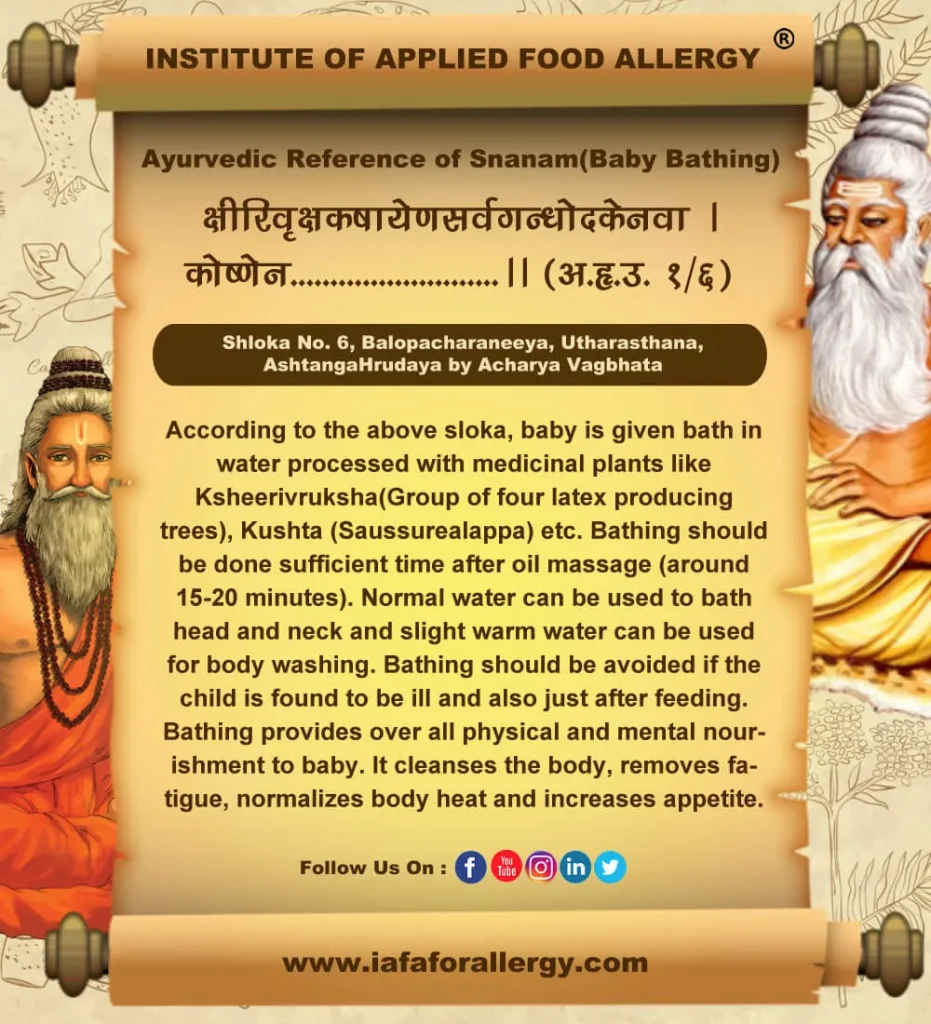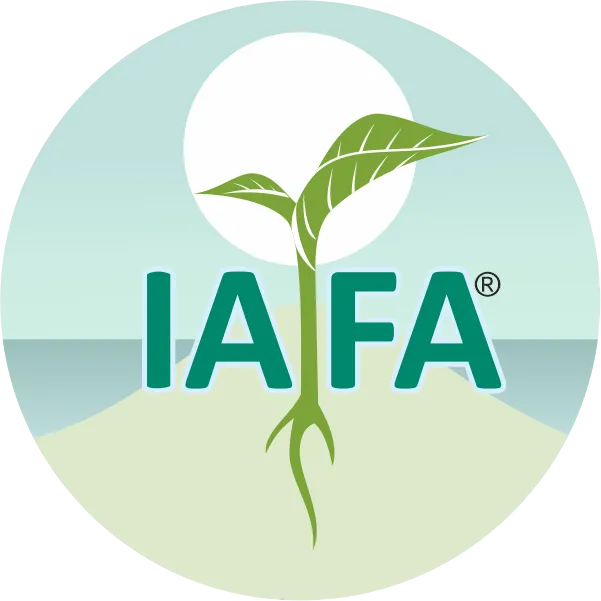On This Page
Baby Care
क्षीरिवृक्षकषायेणसर्वगन्धोदकेनवा l
कोष्णेन………………………………………..l l
Having a new born baby in the family will be the happiest yet the most care requiring moment, both for baby and mother. A well planned and scientific approach towards baby care helps to improve the physical, mental and social wellbeing of the child. Ayurveda has unique and effective practices that help to uplift the child health. Ayurveda details various procedures required for a baby from birth to each stage of development. Dr. Gupta’s IAFA provides genuine guidelines to follow the practices of Ayurveda in daily life from birth itself. IAFA is conducting several programs that ensure over all baby care.
The growth stage of a child can be divided into different classes based on their age, as follows:
- Neonate – Within 28 days of birth
- Newborn – Within 2 months
- Infant – Within 1 year
- Toddler – 1-3 years
Baby care within 1 year of birth is very crucial and should be watchful in terms of being healthy and fruitful. In this regard, Ayurveda ensures specific protocol for baby care. This should be adopted only after assessing the general health of baby.
Oil Massage
Breast milk is the easiest, safest, cheapest and most nutritious baby food. Nothing can substitute breast milk unless other than inevitable. According to Ayurveda breast milk has all the nutrients essential for optimum growth of baby. If breast milk is not sufficient Ayurveda suggests use of goat’s milk instead. Food should be given after bathing.
Food
Breast milk is the easiest, safest, cheapest and most nutritious baby food. Nothing can substitute breast milk unless other than inevitable. According to Ayurveda breast milk has all the nutrients essential for optimum growth of baby. If breast milk is not sufficient Ayurveda suggests use of goat’s milk instead. Food should be given after bathing.
Kid’s Room
Room for the child should be maintained neatly without dust, insects, and humidity and with proper ventilation. Dhupana (Fumigation with medicated herbs) can be done with herbs like Sarshapa (Brassica juncea), vacha (Acorus calamus), Nimba (Azadirachta indica) etc. to purify air before staying.
Ayurvedic Reference of Snanam (Baby Bathing)


“Dr. Gupta’s IAFA provides genuine guidelines to follow the practices of Ayurveda in daily life from birth itself. IAFA is conducting several programs that ensure over all baby care. Follow Ayurveda through Institute of Applied Food Allergy® and succeed in assuring your child a natural friendly and healthy life”.
IAFA, a completely natural Ayurvedic child care solution !!!
– Dr. Sahil Gupta (B.A.M.S., M.H.A.)
Ayurvedic Allergy Specialist
CEO & Founder of IAFA®
At last, Easier Baby Care Management

Trusted by
More than 90,000 Patients

Convenient
at-Home Treatments

9.2 / 10
Customer Satisfaction Score
General Immunity and Wellbeing
Ayurveda advises use of various medicines and medicinal herbs for the prevention and cure of pediatric ailments and also to improve general immunity and skills. Ghee is proven to cross blood brain barrier in humans. Cow’s ghee is the best among all types of ghee and can be given to children mixed with rice. Medicated ghee like Saraswatha Ghrta is depicted to improve general intelligence. Vachadi churna can be given with ghee to improve speech. Rajanyadi Choornam is a classical Ayurvedic medicine with Haridra (Curcuma longa) as the main ingredient for many of the debilities of the baby. IAFA also follows, the Suvarnaprashan Sanskar method, which is an Ayurvedic preparation with original gold as one it’s constituents. This formulation helps in the mental, social, emotional and physical development of the child.
Diaper rash is one of the common discomforts that most of the children come across. Ayurvedic preparations like Murivenna, shathadhaoutha ghrutham, Triphala churna, single herbal powders etc. have found to be very effective to cure Diaper rash completely depending on its condition.
Single Herbs for Baby Health
Single drugs like Brahmi (Bacopa monnieri), Mandukaparni (Centella asiatica), Vacha (Acorus calamus) etc. can be given with proper adjuvants to increase intelligence and brain activity.
Frequently Asked Questions
Question: Does Ayurveda have norms on baby care?
Answer: Yes, Ayurveda explains systematic customs for baby care in different stages of growth.
Question: What food can be given to babies in case of insufficient breast milk?
Answer: If the breast milk is insufficient goat’s milk will be the best substitute as per Ayurveda.
Question: What can be done to improve general health of baby?
Answer: Ayurveda suggests use of various herbal preparations like Saraswathaghrta for improving general health and wellbeing of child.
Question: Can oil massage be done on a new born baby after a week?
Answer: The skin of a new born baby is very soft and there is no need for a massage at least for initial 1-2 months. After 1-2 months, based on doctor’s advice, a gentle oil massage with a few drops of coconut oil or sesame oil can be done.
Question: What is the best food for infants?
Answer: Mother’s milk is the best food for infants. Nothing can substitute it as it has all the nutrients essential for the optimum growth of the baby.
Question: How Ayurveda can help in dealing with pediatric ailments?
Answer: Ayurveda advises the use of various medicinal herbs for the prevention as well as cure of pediatric ailments and to improve general immunity and skills of the growing baby.
Question: What are the herbs useful for baby’s health?
Answer: Some herbs such as Brahmi (Bacopa monnieri), Mandukparni (Centella asiatica), Vacha (Acorus calamus) etc. are quite useful which can be given along with their adjuvants.
References
- Shloka No. 6, Balopacharaneeya, Utharasthana, AshtangaHrudaya by Acharya Vagbhata.
- Tewari P.V. Chaukhambha Visvabharati Oriental Publishers; Varanasi: 2008.
- Kaviraj Ambikadutta Shastri. Chaukhambha Sanskrit Sansthan; Varanasi: 2014. Sushruta Samhita of Sushruta, Sutrasthana; Chapter – 1, verse – 8; p.6.
- Child Health and Ayurveda, Edition 2021, by Sahil Gupta, Baby Care Chapter No.1, Page No. 12-14.
Ayurveda gives your child the most fruitful care and Dr. Gupta’s IAFA is the best choice to assure your child a healthy life through Ayurveda. Follow Ayurveda through IAFA and succeed in assuring your child a natural friendly and healthy life.
IAFA, a completely natural Ayurvedic child care solution !!!
Was this Page Helpful?
So IAFA Root-Cause Treatment of Your Baby Care is Just 3 Steps Away!

01. Connect With Us
Book an appointment to share queries of your child health.

02. Consult With Us
Consult with Ayurvedic Pediatrician of IAFA®.

03. Root Cause Treatment
Get an accurate diagnosis and treatment for your child.
Baby Care – Case Studies
Real Case Studies of Successfully Treated Patients from All Around the World by IAFA Ayurveda®











